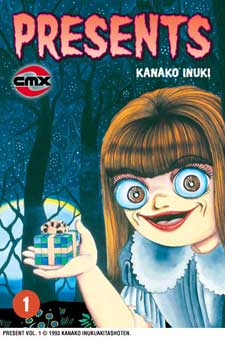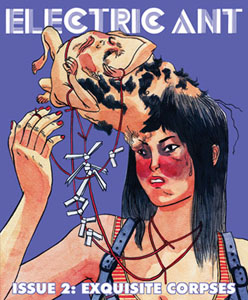 Logo handmade by Bannister
Column by Scott Green
Logo handmade by Bannister
Column by Scott Green
For Everyone...
Moyasimon: Tales of Agriculture Manga By Masayuki Ishikawa Released by Del Rey
Personally, Plan to Gift
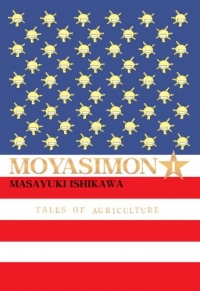
Imagine a world where tiny, invisible things were everywhere... shaping every aspect of life.. living all over you... breaking down organic matter... potentially lethal. Oh wait... As the gift idea with which I am most enamored this year, I considered appending this manga as a stand alone suggestion to one of the AICN Anime columns. Last year, I was giving out copies of Yokai Attack. This year, I'm giving out Moyasimon. Masayuki Ishikawa's work is an exquisite example of WTF manga. Perhaps the best to be published in English. It follows a pair of friends who leave their rural community to study agriculture at a sprawling university. And, one of these young men can see and hear bacteria. Not how they look under an electron microscope, but as little sketched out mascot characters. Smiling, dangling E. coli peeping "Let's brew up... and kill 'em all!" Thin, pin point eyed tricophyton (athlete’s foot) and so on... Through this character, Moyasimon offers an examination of bacteria's place in the world, both mundane and exotic. The manga is dense, didactic, and often disgusting... I can't think of a volume of manga in which I've read the word "anus" more times... And yet it is incomparably charming. There is a reason why Japan has made an art of this sort of mascot character (subject of the Yokai Attack author's Hello, Please! Very Helpful Super Kawaii Characters from Japan), and they're smiling inducingly effective here.
Monster Manga By Naoki Urasawa Released by VIZ media
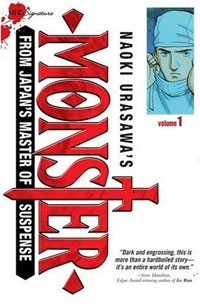
There's a lot to recommend in Urasawa's sorrowful reimagining of Astro Boy's classic story The Greatest Robot on Earth and Urasawa's brilliant apocalyptic serial 20th Century Boys. However, it's not just that the anime adaptation of Monster (featured here) is running on Syfy. It's that the manga features an absolutely bracing first volume - a brilliant hook to a long running, but finite series. An expatriate Japanese doctor is on the quick ascent in the political environment of a prestigious German hospital, until his rattled by the acquisition that he abandoned a Turkish immigrant laborer to operate on a celebrity opera singer. With the scales fallen from his eyes, he refuses to leave the side of a child gunshot victim in order to attend the city's mayor. The child lives. The mayor dies, and the young doctor's career is ruined. But then the boy disappears and in the wake of the vanishing, the necessary people die to right doc's career. A decade passes, and the young man that save boy grew up to be reemerges and reveals himself to be a serial killer, a mass murderer, or perhaps something more calculating and dangerous than either. It's the "would you kill Hitler as a child" thought experiment, and Naoki Urasawa uses the heft of that question to launch an odyssey an intersecting life's stories. Let me trot out this gross, contradictable generalization again. Young audience manga, like shonen, are about aspiration... I'll be the greatest ninja or pirate or go player or bread baker. Older audience manga, like seinen, are about reconciliation... how do I live with my job, my family, my past, how do I get along with the world. Sure, the genre has works like Golgo 13, about a heartless trouble shooter capable of besting any obstacle, but many of its characters have to deal with the place into which they've put themselves. Pairing top talent for creating involving characters and involving serial stories, Urasawa chronicles a journey for that sort of reconciliation that commands the attention of an adult audience like few others.
Phoenix, Vol. 4: Karma By Osamu Tezuka Released by VIZ Media
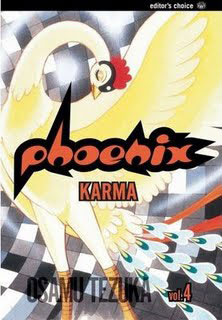
I recently sketched out a short list of what I considered to be the best (significance, artistic merit) manga released in North America is the 00's. Then, I sketched out a list of my favorite (personal enjoyment) manga of the decade. Phoenix : Karma was the one title on both lists. The Tezuka manga that has impressed me as the work that best speaks to an adult, modern, western audience is Adolf. Unfortunately, it's out of print, and it's first volume can be difficult to find and/or expensive. Phoenix: Karma is a close second. Self described as his life work, Phoenix is Tezuka's examination of human nature, constructed with thematically connected stand alone stories that move forward from the beginning of history and backward from the end of humanity along the spokes of a wheel of reincarnation. On of the figures reincarnated throughout is a bulky man with a hideous nose - talented but an outcast. Through this figure, Tezuka creates gargoyles... harsh, snarling figures that are beautiful in their release of furious rage. In Karma, he's named Gao. Born in a small fishing village in 720 AD, during Japan's cultural coalescence, Gao's father raced up a steep incline to thank the mountain spirits for a strong baby, but, in a twist of fate, fell to his death and left Gao scarred, less one eye and one arm. Taunted by his peers, Gao's rage built until it boils over into murder. On the run, Gao encounters a sculptor named Akanemaru, whose kindness toward Gao is rewarded when Gao maims the sculptor's arm. Gao continues his life as a murder and bandit until sorrow leads to his capture and subsequent release into the guidance of a wizen one armed monk. The monk hopes to calm Gao's spirit, but instead Gao finds an outlet for his hate, and the frustration of his country's people in grotesque sculptures. Akanemaru is likewise led back to sculpture by a monk, but finds himself on the guiding edge of the intersection between spirituality and politics with patrons in the powerful nobleman Tachibanano Moroe and influential diplomat and scholar Kibi Makibi, who see Buddhism as a tool to unify and subjugate the masses. Among the fascinating elements of Tezuka's works is his construction of dialectics. Contrasting what Gao becomes with Tachibanano Moroe and Kibi Makibi's power games and intent to bleed people through religion and its iconography, Karma attempts to reconcile religion's misuse with its function as a window to truth. There is an almost meta quality to Tezuka's wrestling with art and morality, as well as his beautiful depictions of the harsh and infuriating elements of human life. It's a fascinating work that I've revisited and lent of many times. One of truly potent testaments to the power of Tezuka's work.
Town of Evening Calm, Country of Cherry Blossoms Manga by Fumiyo Kouno Released by Last Gasp

It's not always a simple tautology, but the best guide to the intended audience for a work of manga is usually the publication in which it was originally serialized. That said, Town of Evening Calm, Country of Cherry Blossoms (covered here) ran from 2003-2004 in Weekly Manga Action, an anthology that features covers with photos of scantily clad young women, Lupin III - sanitized as an ungentlemanly gentleman thief in the anime incarnation, but a Neanderthal killer, would-be rapist in the original manga, vulgar child Crayan Shinchan - again cleaned up for his anime incarnation, hell bound assassin Lone Wolf and Cub, and inverted noir Old Boy. In order words, Town of Evening Calm, Country of Cherry Blossoms wasn't launched from a bastion of sensitive discourse. Then again, Barefoot Gen ran in Dragon Ball/Naruto home Weekly Shonen Jump. The first of the two stories is set a decade after the atomic bomb attack on Hiroshima. The second is set a generation after. What the manga underscores is that the bombing was not a finite horror. It transformed the lives of people, and their children and their children's children. These stories aren't about history or politics. They're about lives shaped by, among other things, the attack. Where language defies a description, manga rises to the occasion. The results are a work that is difficult to think about without getting a bit choked up, not because of grand overtones, but because it shows the lives of credible people from that place. While it's probably the least enjoyable recommendation on this list, it is readable, approachable and a volume that warrants place on any person's bookshelf.
For AICN Readers...
Akira Manga by Katsuhiro Otomo Released by Kodansha Comics
Personally, Have Gifted
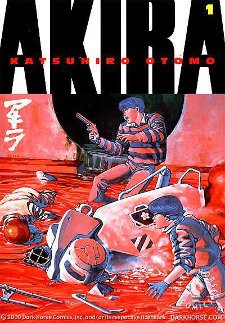
I previously gifted this when Dark Horse put out the Barnes and Noble exclusive hardcover. Now that Kodansha has released their edition of the manga (covered here), I wish I remember who I gave out copies to, because I'd like to reuse the gift idea. Akira remains a testament to how sci-fi can be expressed through manga, deserving a spot on the shelf of any genre fan. It's an 80's manga, presenting the negative inverse to Japan's boom economy. Yet, it depicts a broken system that feels relevant to modern America, and represents it with painstakingly rendered virtuosity that hasn't been equaled. The Blu-ray release of the anime is also certainly nice presents.
Battle Angel Alita Manga Released by VIZ Media
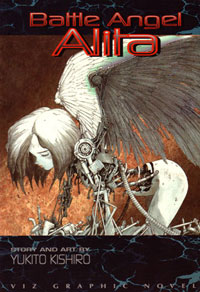
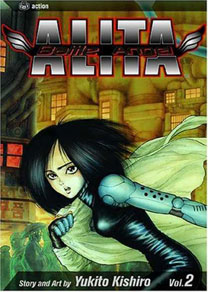

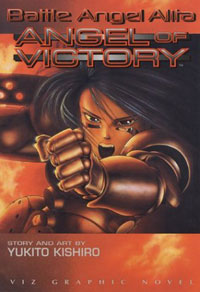
Presumably Avatar is going to do something to Cameron's cache. I'd imagine that that stock is going to climb or plummet, but I'm not inclined to hazard a guess as to which direction it'll take. Hopefully, however it sorts itself out, it'll propel him into work on his long awaited adaptation of Battle Angel Alita. Assuming that JC's Battle Angel happens, you'll be helping the manga recipient get in on what'll be close to the ground floor of that fantastic franchise. If not, it's still the gift of head spinning action sci-fi. I'd recommend a bundle of volumes one through four. Follow up manga series Battle Angel Alita: Last Order is an absolutely gaga tournament fighting series, and it's one of my favorite titles of this decade. However, Last Order lacks a set of the original, nine volume Alita series' winning qualities. The manga begins in a pile of parts in the Scrap Yard, the material and social dumping grounds for the technological utopia of Tiphares. Doctor Ido finds a female cyborg head with an intact brain inside. He builds it a body and names the reborn life "Alita." From there, Yukito Kishiro tells the evolving life story of his resurrected subject. As he relates those convoluted changes, he riff off inspiration and develops his own style. Volume One could stand alone. Alita follows Ido into his more-profitable moonlighting occupation - bounty hunter work and finds herself dueling a sort of grotesque, sewer dwelling robo-Gene Simmons. It's an interesting time capsule, both capturing the spirit and aesthetic of genre media of pre-1990 genre media and Kishiro's rough early style. Though it was published in Business Jump, the inspired and promising, but not entirely formed illustration recalls the earlier, just out of self publishing early works from the likes of Masamune Shirow and CLAMP. Again, volume two, could be stand alone. This time, Alita is party to an affecting tragedy. She is a bit naive and a bit marginalized, but despite that, it's still one of my most highly recommended volumes of manga. If Cameron follows the pattern employed by the anime adaptation of Alita, this volume could be a key ingredient the movie's plot. Volumes three and four tell one story, and this time, it feels more like an episode in a longer narrative. When manga began being shelved in book stores, I'd always see these volumes and they caused me to shy aware from Battle Angel Alita. You see, in this section of Alita, the character ran away and joined the motorball (robot rollerball) circuit. The idea really didn't strike me as a good one, or something in which I'd be inclined to be interested. As, such, when Kishiro managed to mesmerize me with his cyborgs kinetically hurling along the roller-tracks, I swore undying allegiance to his spectacular manga.
Detroit Metal City Manga Released by VIZ Media
Personally, Plan to Gift
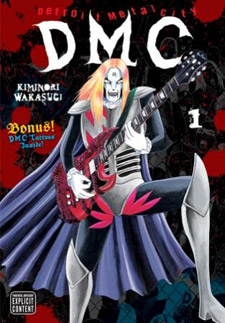
Speaking of Gene Simmons... As I've said a couple of time recently 2009 has been the best year for mature comedy manga since the Pulp anthology ended, with releases like Sayonara Zetsubou Sensei, Little Fluffy Gigolo Pelu, Detroit Metal City, and the Sigiki lineup. Sayonara Zetsubou Sensei is my favorite by a wide margin, but it's a particular work, with a lot of very Japanese jokes. I'd be careful about gifting it. Detroit Metal City (covered here) is another story. It's subject, Soichi Negishi was a nice, Amelie-loving country boy who moved to Tokyo with dreams of playing Swedish style pop music about bakeries and pure love. Instead, he found himself performing under the name Johannes Krauser II as lead guitar and vocals for "evil core death metal" band Detroit Metal City. Internet denizens, I've seen how you banter. After reading AICN Talkback for years, I think I can say with authority that Detroit Metal City speaks your language. . This is the manga that declares its terrorist intent to affront good sense and good taste. Here's manga in which an Ozzy doppelganger grabs the skinny hero from behind while not-Ozzy's translator informs the panicking lead "he says relax a little. It'll hurt less and may even feel pleasurable." It might not be a highbrow pleasure, but I'll admit that I'm a mark for DMC's jokes about sputtering offensive obscenities and simulated sexual assault. I've read through Detroit Metal City a number of times now and I'm still laughing out loud at the vulgarity punctuated comedy.
Shigurui: Blood Frenzy Anime Released by FUNimation
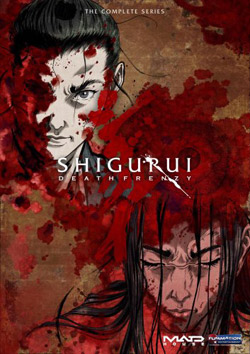
I've said it before... Ninja Scroll meets Fight Club in one superlatively stomach turning anime. This anime (covered here) has been more overlooked than it should have been. You can read depth into Shigurui's lavish grotesquery. The contrast between pristine mentality and intestine spilling realization of that mentality calls to be the likes of Yukio Mishima. Though the anime skewers that ethos, as appalling as its characters, their actions and the consequences of those actions might be, there's also a romanticized machismo that says "ignore the pain! hit the gym! emulate these bad-asses. " It's anime that you'll cause you to both respond intellectually and viscerally. In the case of the latter, fan of Ninja Scroll, Afro Samurai the like will not be disappointed.
For the Christmas True Believer
Tokyo Godfathers Anime
Personally, Have Gifted
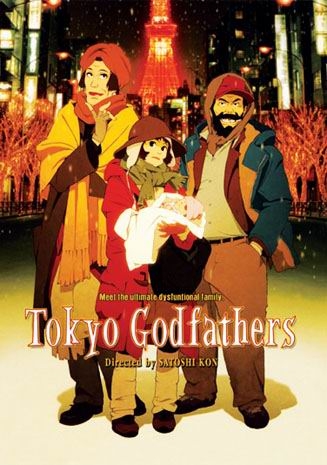
You don't need to be Christian or sentimental to be moved by Tokyo Godfathers, but the latter certainly helps. And yet, while it's a compellingly nice anime, few works in the medium are as unblinking in their gaze at real, often ignored problems. From Satoshi Kon, one of the great anime directors of the last decade, comes the story of a trio of homeless people - an ex-cyclist who lost his wife and daughter, a drag queen, and a teenage girl - find a baby on Christmas eve. It's been criticized as a movie that did not need to be told through animation, and even for a Kon work its notably light on fantasy, but Kon used his nuanced control over his chosen medium to telling a moving story of characters too real for clichéd labels like "unlikely heroes." There really aren't that many anime movies produced. Most of what is made tie into boys' franchises like Naruto or One Piece. Then, it doesn't seem like many have a knack for structuring a feature lengthed production - hence dominance of movies that are like collections of tenuously connected set pieces. An anime movie that works as a film is something special. Satoshi Kon did one better and put together a anime feature that holds up against holiday classics of any medium. If you want a nice pack it, I highly recommend Andrew Osmond's book on the director, Satoshi Kon: The illusionist.
For the open minded loved one...
Little Fluffy Gigalo by Junko Mizuno Release by Last Gasp Manga
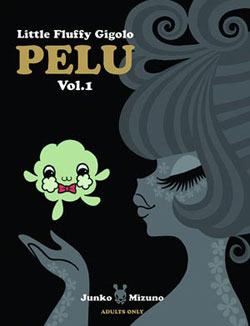
If you give this to a loved one and they don't look at you askance, you know you have a keeper. It's not exactly like handing over a gift wrapped copy of the Audition on Blu-ray, but Little Fluffy Gigalo (featured here) is still an awesomely demented present. Mischievous manga are a thing of beauty... the screaming naughtiness of Kazuo Umezu's Drifting Classroom and Cat Eyed Boy... descendants like Toru Yamazaki's comedy nihilist Octopus Girl. In that vein comes a new work from Junko Mizuno, recognizable for her signature blend of Sanrio/Hello Kitty cherubic puff and with Hideshi Hino style nauseating grotesque. This fairytale follows the tragic exploits of a sentient, cotton ball-esque reproductive organ from the planet Princess Kotobuki who jumps through "a calm but carnivorous giant space hippo's" magic mirror in order to find a wife on Earth. His failures to find that mate take that the form of fractured fairytales sure to evoke responses like "weird! why is the girl with the Disney Princess hair covered with bandages and why is she feeding a bag of pills to the bunnies?" Mizuno can be a divisive creator. I believe that you do need to "get" her work to appreciate some of her manga. However, I don't believe that's the case here. Little Fluffy Gigolo Pelu features enough dire absurdity that it'll force you to laugh. Whether the gift recipient forgives you is another story.
For the with a fan with a deeper interest
Starting Point: 1979-1996 by Hayao Miyazaki Released by VIZ Media
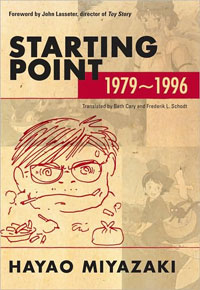
This past summer, did Hayao Miyazaki say anything worth remembering during this North American appearances? I can't think of anything. Though that isn't surprising: a) as anyone who as seen a Hayao Miyazaki movie can attest, he possesses a thoughtful, sharp opinion of problems to be found in the world b) he'll occasionally come out and say something that'll command a headline and make his opinions explicitly known, usually in the form of a heavy critique. He's not exactly a guy afraid to tread on toes. For example, he based Spirited Away's Chihiro on a friend's daughter. On one hand, he noted the lack of movies featuring typical, modern girls like her, on the other, he criticized the child as indifferent and unsociable. Starting Point features essays by the opinionated anime maestro, written from when he was doing scene design and layout for World Masterpiece Theatre works like 3000 Leagues in Search of Mother and Anne of Green Gables, through production of Nausicaa at Topcraft, the founding of Studio Miyazaki and the production of their classic works (Castle in the Sky, My Neighbor Totoro, Kiki's Delivery Service and Porco Posso), up until the year before Princess Mononoke was release. It's Hayao Miyazaki discussing the media in which he worked, his art and his views of subjects like Ghibli co-founder Isao Takahata, Akira Kurosawa's work, and the impact of Osamu Tezuka on anime and manga (in an essay entitled "I Parted Ways with Osamu Tezuka When I Saw the 'Hand of God' in Him"). There are some irksome issues with the book. Foremost among them is a lack of an index, but, that doesn't lessen what is an invaluable volume. And, it's in hardcover, which enhances its giftability.
Also... For the Anime Fan...
Evangelion 1.01: You Are (Not) Alone Released by FUNimation
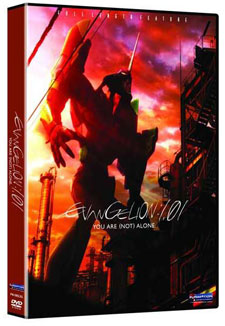
I recently took part in a a discussion about the product copy that declares Neon Genesis Evangelion "the original giant robot anime." It was my contention that "original" was being used as a synonym for "ground breaking" "ingenious", "innovative" rather than "first." "First" is often a complicated issue, but I didn't think FUNimation was trying to usurp the position of Tetsujin 28, which I'd pin as anime's first heroic giant robot. I'm pretty sure that Astro Boy had adversarial giant robots. Same for manga. There were also large machines in pre-war manga and kamishibai. Yet, the kid with his giant robot from which Evangelion inherits much has Tetsujin 28 as its forefather. How innovate Neon Genesis Evangelion might have been is again a debatable point. It's producers, Gainax, applied many of it's stand out qualities to previous work on Gunbuster. And yet, Evangelion is a seminal work. Over the last dozen years, anime in North America and Japan have been shaped by Evangelion - along with the mania surrounding that show. Since airing on Japanese TV in 1996, Evangelion has not ceased to churn out merchandise, particularly its young blue and red female leads Rei in Asuka in various re-garbed modes from soldiers to mermaids. Yet, Gainax hoped to reignite this demon, and bring it to a new audience. So, in 2007, they release the first of four Rebuild of Evangelion movies, Evangelion: 1.0 You Are (Not) Alone. It retold the first six episodes of the 26 episode TV series, and in doing so, got into some trouble for being neither fish nor fowl. A bit too familiar for Eva veterans and a bit distancing for newcomers. Yet, it's beautifully animated, with some breathtaking scenes of titanic robots and monsters clashing... I personally like how the Misato character's design has been tweaked, making her look like a 28 year old woman. Despite it's flaws, buy this movie for the anime watcher in your life. They've probably cut down on physic media purchasing, but they still want this in their collection. It's a glaring hole next to their set(s) of the original Neon Genesis Evangelion TV series. And, there's nothing that otaku mania can abide by less than in an incomplete collection.
In brief...
>
- Kanako Inuki's horror manga Presents. A gift I've delivishly given. See reviews of volume 1 and volume two of the three volume CMX release.
- Electric Ant issue 2 - covered here. The whole thing is great, but any geek will love its These Bloody Moments" art collection
- Asian/Asian American art and pop culture magazine Giant Robot sells gift subscriptions
- Yawara - overlooker anime about girl training to compete in judo at the Barcelona Olymptics. A forty episode set was released by the now seldom heard from AnimEigo

